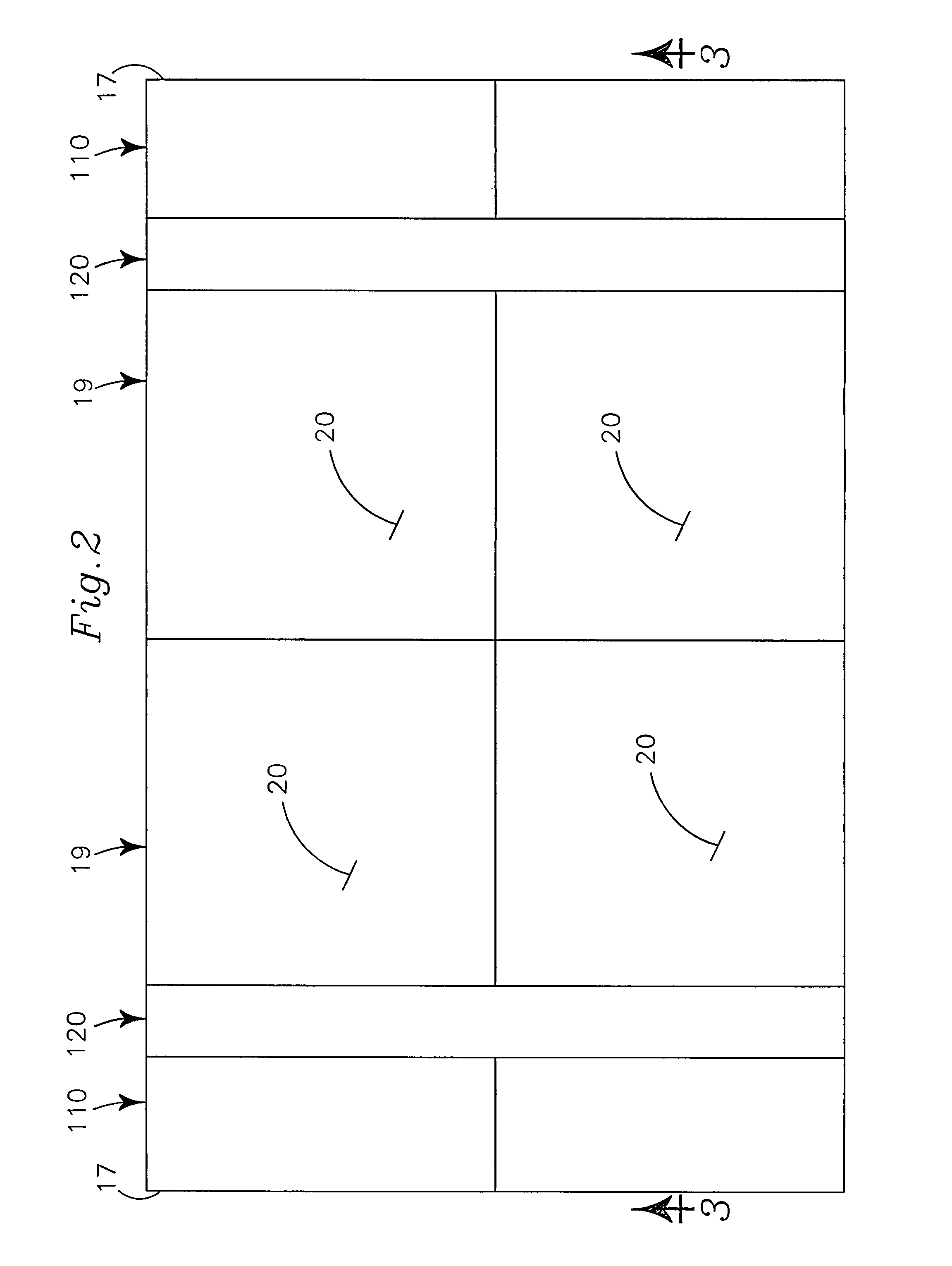Method and system for collecting, storing and distributing solar energy using networked trafficable solar panels
a solar panel and networked technology, applied in the direction of traffic signals, roads, lighting and heating apparatus, etc., can solve the problems of lack of a cohesive integrated infrastructure that uses solar energy as a power source, low cost of solar power systems, and lack of a cohesive integrated infrastructure, etc., to achieve the effect of easy replacement of components
- Summary
- Abstract
- Description
- Claims
- Application Information
AI Technical Summary
Benefits of technology
Problems solved by technology
Method used
Image
Examples
Embodiment Construction
[0063]It is to be understood that the present invention is not limited to the particular methodology, compounds, materials, manufacturing techniques, uses and applications described herein, as these may vary. It is also to be understood that the terminology used herein is used for the purposes of describing particular embodiments only, and is not intended to limit the scope of the present invention. It must be noted that as used herein and in the appended embodiments, the singular forms of “a”, “an” and “the” include the plural reference unless the context clearly indicates otherwise. For example, reference to “an element” is a reference to one or more elements and includes equivalents thereof known to those skilled in the art. Similarly, a reference to “a step” or “a means” is a reference to one or more steps or means and may include sub-steps and subservient means. All conjunctions used are to be understood in the more inclusive sense possible. Thus, the word “or” should be unders...
PUM
 Login to View More
Login to View More Abstract
Description
Claims
Application Information
 Login to View More
Login to View More - R&D
- Intellectual Property
- Life Sciences
- Materials
- Tech Scout
- Unparalleled Data Quality
- Higher Quality Content
- 60% Fewer Hallucinations
Browse by: Latest US Patents, China's latest patents, Technical Efficacy Thesaurus, Application Domain, Technology Topic, Popular Technical Reports.
© 2025 PatSnap. All rights reserved.Legal|Privacy policy|Modern Slavery Act Transparency Statement|Sitemap|About US| Contact US: help@patsnap.com



